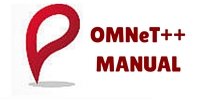A mobile relay station (MRS) with soft handover experiences performance degradation because the received signal at the MRS located between two base stations (BSs) is the sum of these two signals with different carrier frequency offsets (CFOs). In this paper, two receive beamforming techniques with CFO compensation (a joint receive beamforming (JB) technique and a […]
Read moreReceive Beamforming Techniques for an LTE-Based Mobile Relay Station With a Uniform Linear Array
Future wireless networks will face the dual challenge of supporting large traffic volumes while providing reliable service for delay-sensitive traffic. To meet the challenge, relay network has been introduced as a new network architecture for the fourth generation (4G) LTE-Advanced (LTE-A) networks. In this paper, we investigate resource allocation including subcarrier and power allocation for LTE-A relay […]
Read moreFingerprinting based localization is one of the most widely used indoor localization methods. This method is divided into two phases: during the off-line training phase, fingerprints within the area of interest are collected and stored in a fingerprint database; during the on-line mapping phase, the real-time location of a device is estimated by mapping itself to the […]
Read moreRateless Codes are effective in reducing the costs of retransmissions over erasure channels. Some rateless codes have systematic leading parts which have been shown in the literature to enhance their performance. The systematic part allows a node to start transmitting packets as soon as they are received without waiting for the entire multi-packet message to […]
Read moreTwo major challenges in networked control systems are the time-varying networked-induced delays and the packet losses. To alleviate these problems, this study presents a novel fuzzy sliding mode controller, where a fuzzy system is used to estimate the nonlinear dynamical system online, and the networked-induced delay is handled by Pade approximation. The problem of packet […]
Read moreWe propose a framework to bridge the gap between secure authentication in automotive networks and on the internet. Our proposed framework allows runtime key exchanges with minimal overhead for resource-constrained in-vehicle networks. It combines symmetric and asymmetric cryptography to establish secure communication and enable secure updates of keys and software throughout the lifetime of the […]
Read moreAutonomous Unmanned Aerial Vehicles (UAVs) have gained popularity due to their many potential application fields. Alongside sophisticated sensors, UAVs can be equipped with communication adaptors aimed for inter-UAV communication. Inter-communication of UAVs to form a UAV swarm raises questions on how to manage its communication structure and mobility. In this paper, we consider therefore the […]
Read moreAn increase in world population along with a significant aging portion is forcing rapid rises in healthcare costs. The healthcare system is going through a transformation in which continuous monitoring of inhabitants is possible even without hospitalization. The advancement of sensing technologies, embedded systems, wireless communication technologies, nano technologies, and miniaturization makes it possible to develop smart […]
Read moreBody sensor networks (BSN) have emerged as an active field of research to connect and operate sensors within, on or at close proximity to the human body. BSN have unique roles in health applications, particularly to support real-time decision making and therapeutic treatments. Nevertheless, challenges remain in designing BSN nodes with antennas that operate efficiently around, ingested or implanted […]
Read moreThe Sleeping Cell problem is a particular type of cell degradation in Long-Term Evolution (LTE) networks. In practice such cell outage leads to the lack of network service and sometimes it can be revealed only after multiple user complains by an operator. In this study a cell becomes sleeping because of a Random Access Channel […]
Read more